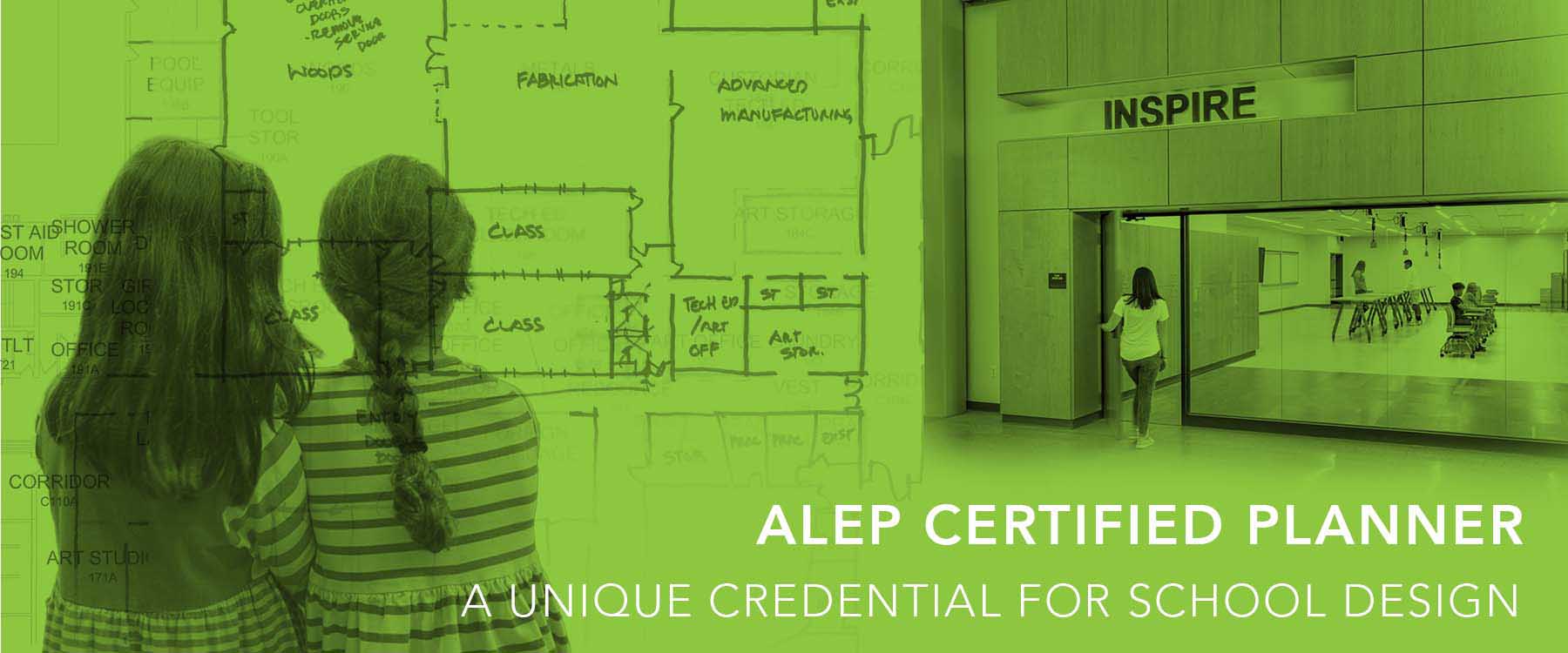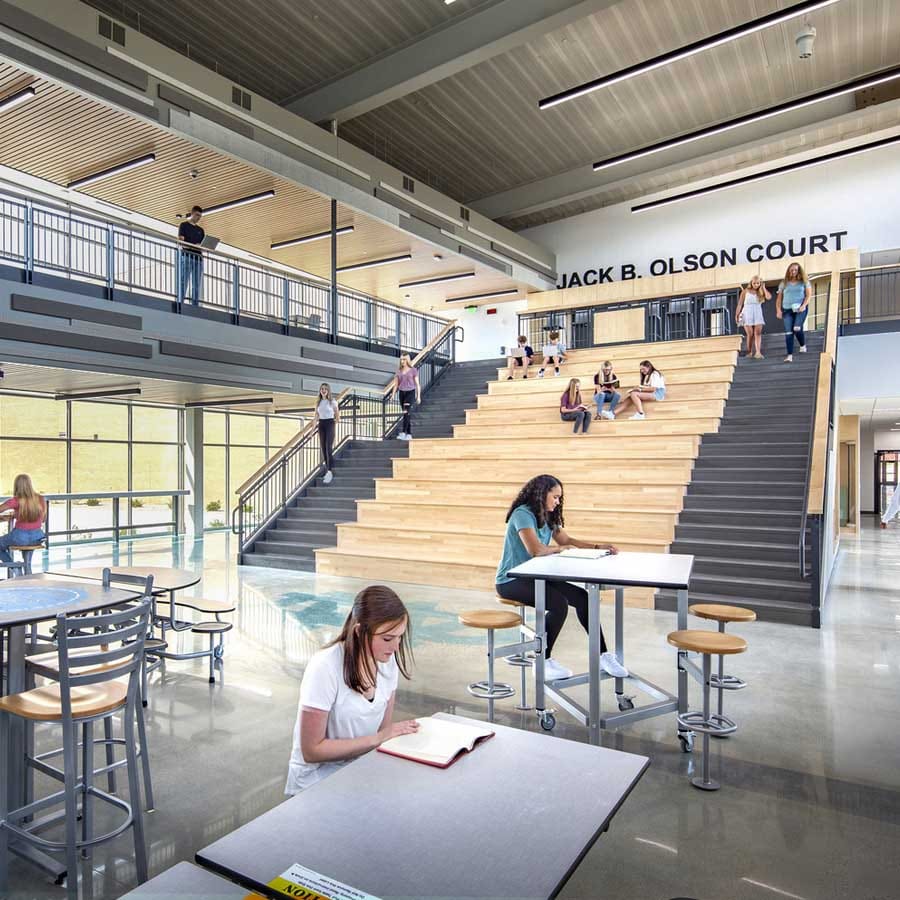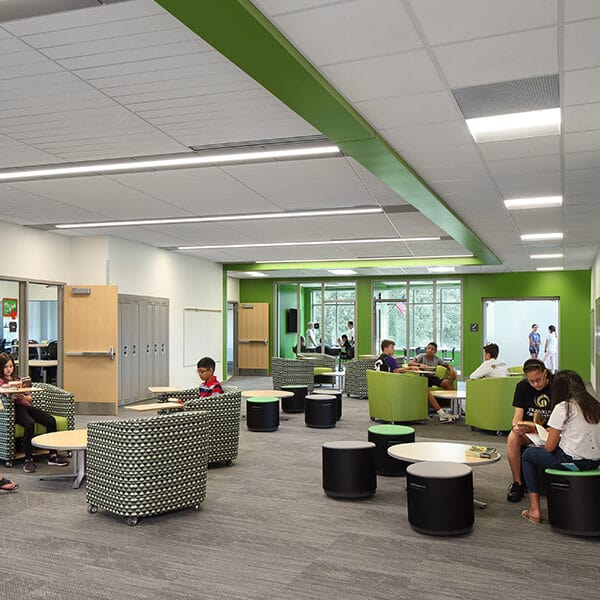A Unique Credential for School Design
ALEP-certified educational planners introduce knowledge beyond traditional architects when creating learning environments. Their understanding of educational planning is nuanced beyond the physical aspects of the school. These professionals recognize the importance of promoting student engagement, creative and critical thinking, and working with other students through the influence of the space and the curriculum. By including educational principles into the design process, they ensure that the physical space becomes an active participant in the learning journey of students. Indeed, Nicholas Kent, an ALEP-certified school architect notes “The entire school is a potential education tool.“
An Accredited Learning Environment P/ilanner (ALEP) certificate is a professional accreditation that signifies expertise in designing learning environments. It demonstrates specialized knowledge in educational planning, safety measures, space use, and other important influences on design. It signifies the difference between an “Architect who also designs schools” and a “School Architect” with proven knowledge to create effective learning environments that support the best teaching and learning experiences.
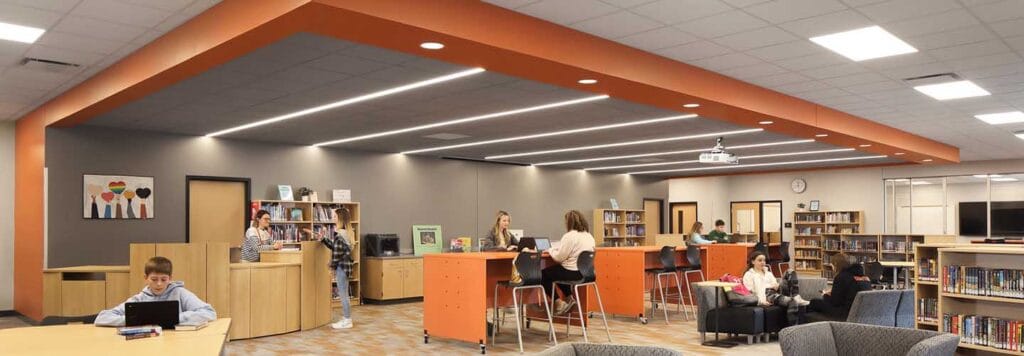
“The building must get out of the way”
One significant design issue that ALEP-certified architects focus on is the use of learning technology. They understand the role of technology in modern education and integrate it seamlessly into the school design without otherwise impacting functional or aesthetic issues. This may include smart classrooms, interactive displays, the ubiquitous student device, and the ability to easily address changing technology and new systems.
School architect Nicholas Kent often says, “The building must get out of the way of learning.” By embracing technology, ALEP-certified architects may innovate classroom design and create learning environments that better prepare students for the digital age. These settings must foster the student’s digital literacy skills more thoroughly than old models of the classroom.
School safety must remain a high priority
In addition to educational principles, ALEP-certified school architects stress safety and security. They recognize the importance of creating a learning environment in which students and staff feel protected. A certified school architect can assess potential risks and implement measures to mitigate them. This includes designing secure entrances with controlled access, integrating surveillance systems, and designing emergency evacuation routes. Without an impact on the school mission. By prioritizing safety early in the design process, ALEP-certified architects contribute to the overall well-being of the school community.
Optimizing space utilization is another area where ALEP-certified architects excel. They understand that a well-designed learning environment must provide functional and adaptable spaces that cater to the diverse needs of students and teachers. Certified school architects carefully plan the layout of classrooms, administrative areas, libraries, and recreational spaces to ensure efficient circulation and maximize available space and safety. They consider factors such as natural lighting, acoustics, and ergonomic furniture to create an environment that supports student focus, comfort, and collaboration. By optimizing space utilization, ALEP-certified architects enhance the overall function and efficiency of the school.
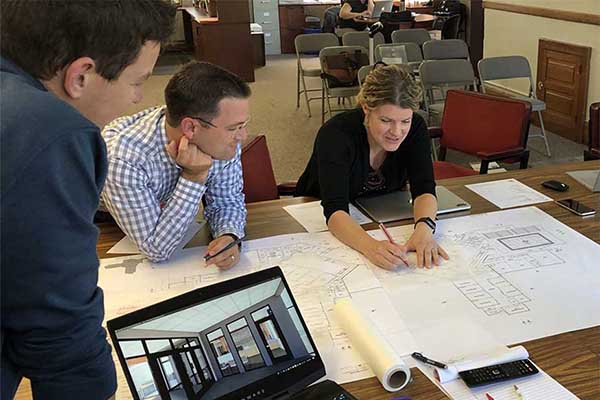
Being intentional about inclusivity helps all
Inclusivity is an emerging core value in school design, and ALEP-certified architects actively promote and integrate inclusive design principles into their school planning. They recognize that every student, regardless of their abilities or disabilities, should have equal access to education. ALEP-Certified architects understand how to design spaces that accommodate diverse learning styles or cultural influences and also seamlessly integrate appropriate accommodations for students with disabilities. Wheelchair accessibility, sensory-friendly spaces, and assistive technology integration may all be useful, as are broader techniques such as increased space allowances or nearby breakout rooms. In these ways, all students benefit from the universal design of learning spaces. By embracing inclusive design principles, ALEP-certified school planners ensure that the learning environment becomes a place where every student can thrive.
Inclusion impacts the design process as well, as collaboration between ALEP-certified school architects and stakeholders is essential throughout the design process. Certified school architects understand the importance of open communication, active listening, and collaboration with educators, administrators, parents, and students. They engage in discussions to understand the unique needs, aspirations, and challenges of the school community. By involving stakeholders in the decision-making process, ALEP-certified architects create a sense of ownership and foster a collaborative spirit. This collaboration leads to a school design that reflects the values, culture, and educational goals of the institution.
Our ALEP-certified school planners make a difference
ALEP certification is crucial for educational planners and school architects. These certified professionals bring expertise in educational planning, consideration of educational principles, safety and security measures, optimal space utilization, inclusivity, and effective collaboration to all aspects of the design process. By gaining this certification, PRA’s Nicholas Kent, demonstrated his commitment to providing an exceptional educational experience for the schools he designs. His expertise and knowledge contribute to the creation of learning environments that inspire, engage, and support the holistic development of every child. For the benefit of us all.
